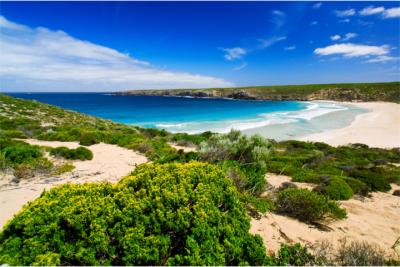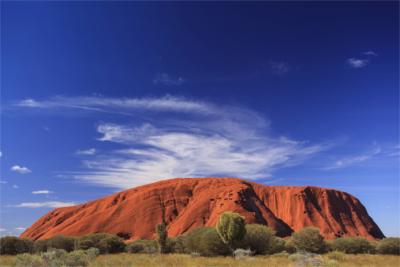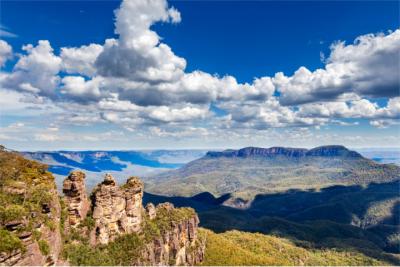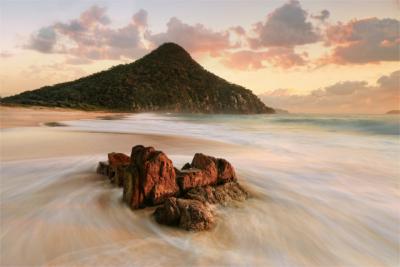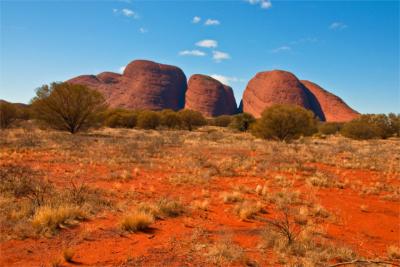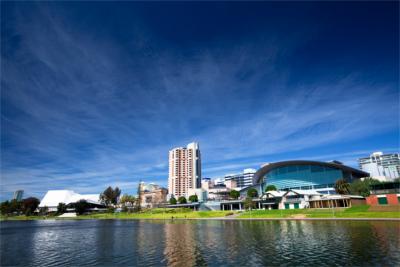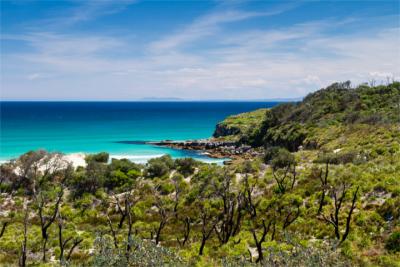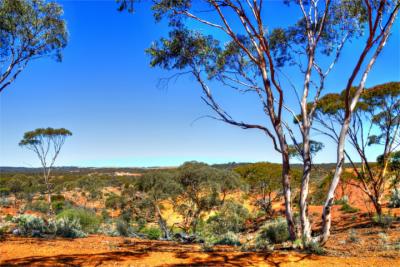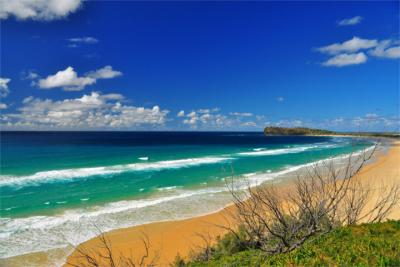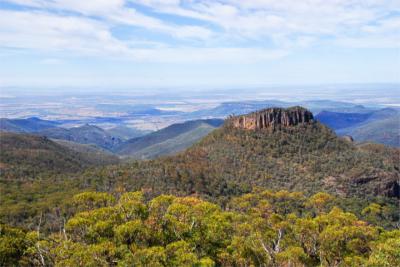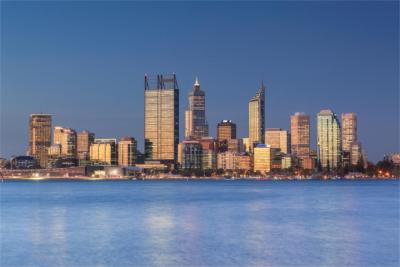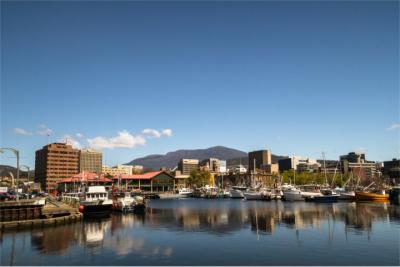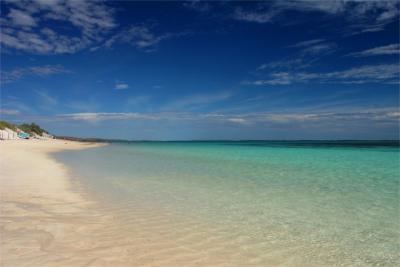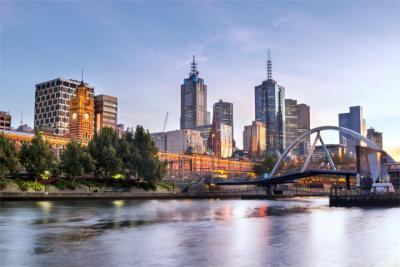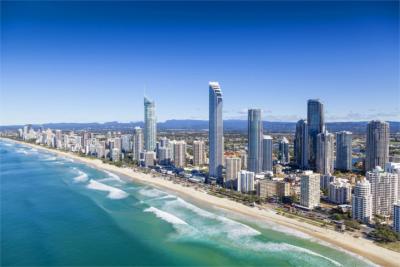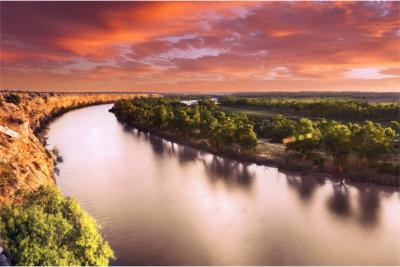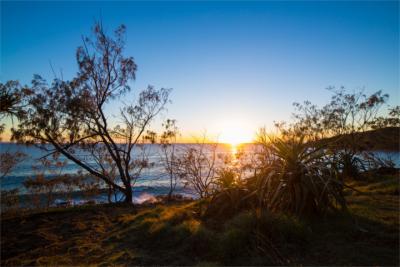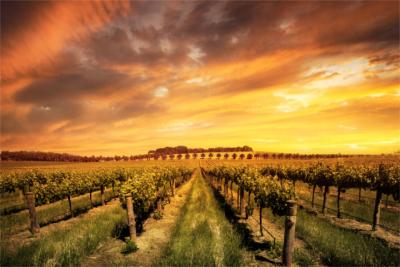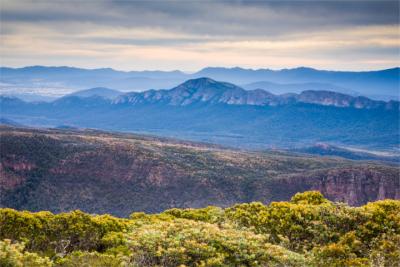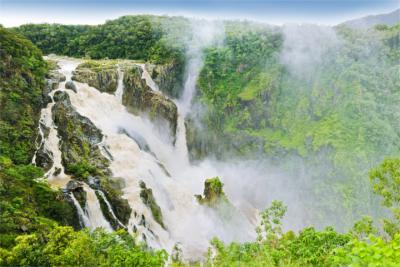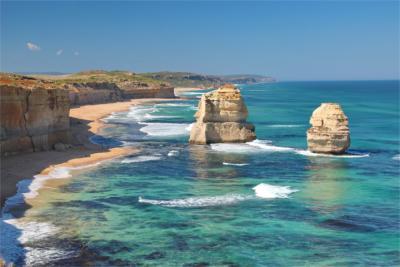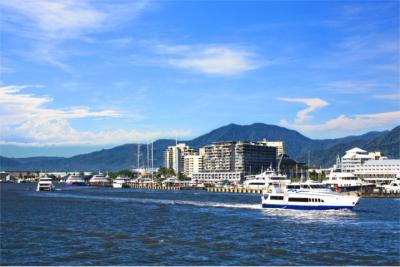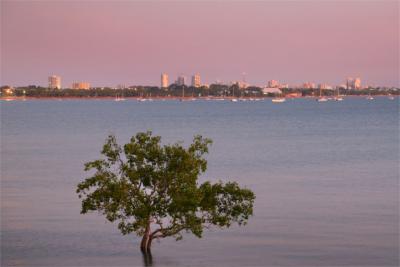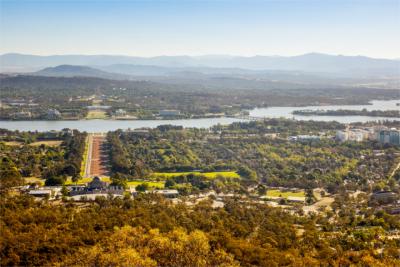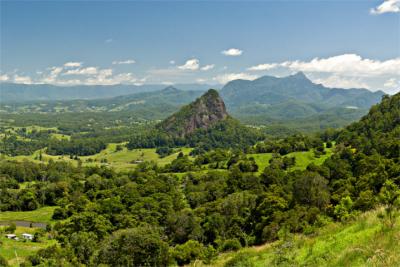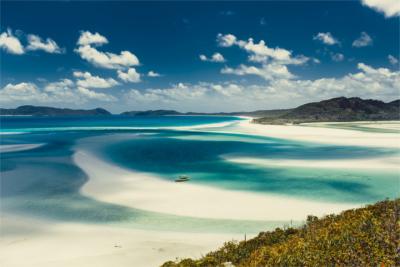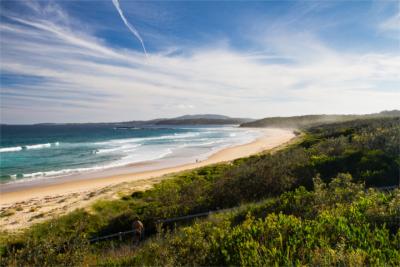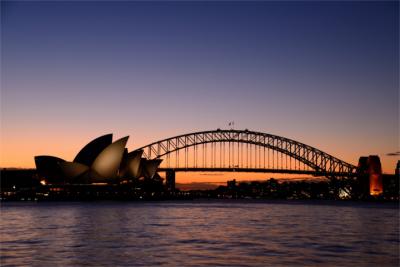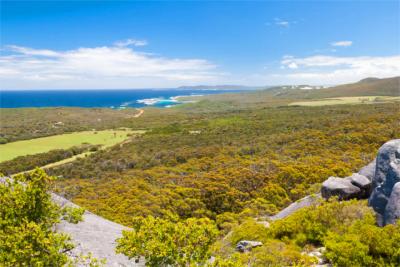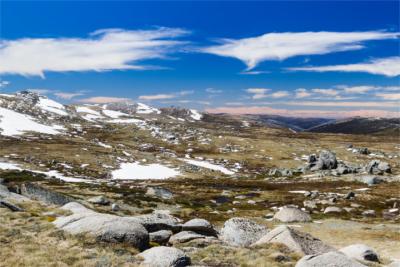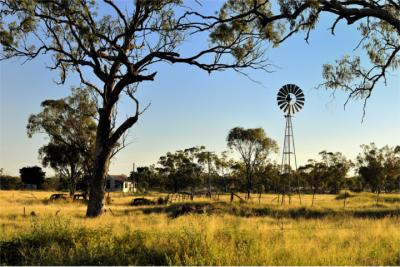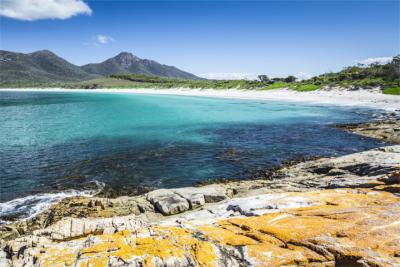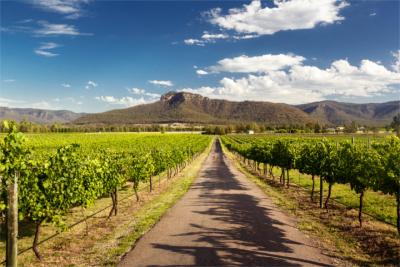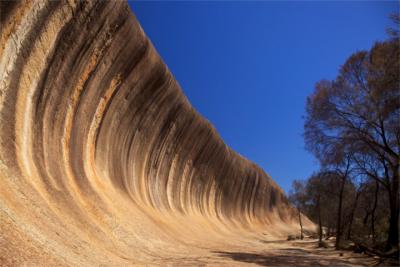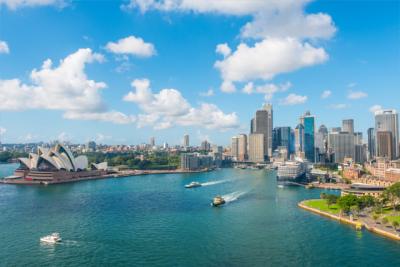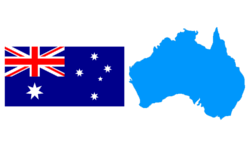Travel Offers
Travelmyne Featureprint
Distance
Australia - Under the Aborigines' Spell
Strange paintings on harsh walls of rock, an opera house which resembles sails of a ship and jumping marsupials at the edge of dry desert landscapes - the Australians are a singular nation. Still, the Great Barrier Reef and the seaport metropolis Sydney attract countless tourists every year.
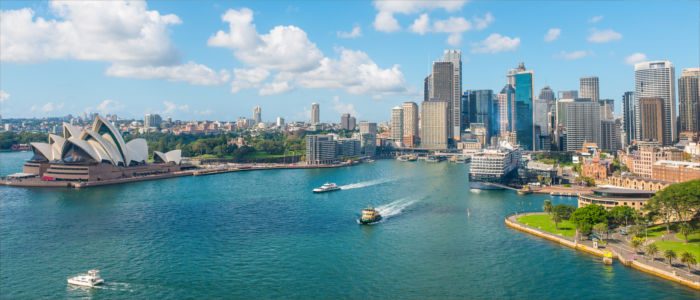
Geography - The "southern country"
The name "Australia" comes from a Latin word and roughly means "southern country", which is based on its geographical position. Australia is an exception as a country because the region is both a state and a continent. Besides the mainland, the offshore island state Tasmania and a number of smaller islands such as the Coconut or Christmas Island belong to Australia, politically speaking. The country is enclosed by the Indian and the Pacific Ocean and lies south of Indonesia. In the east you see New Zealand and Oceania. Altogether Australia can be divided into three natural regions. Vast tableland and dry regions extend in the west with deserts dominating the region. In the centre, you find the central lowland with its sedimentary basin. These areas are virtually uninhabited due to their barren desert landscape and extreme temperatures. The east of the country presents a much more friendly environment. Lush mountain landscapes and a juicy coastal region make Australia one of the world's most popular travel destinations. The majority of the Australian population lives in the east. The climate varies from north to south. It is tropical in the north but subtropical in the central region. The hot deserts are called "outback" by the locals. Temperate climate dominates the country's south.
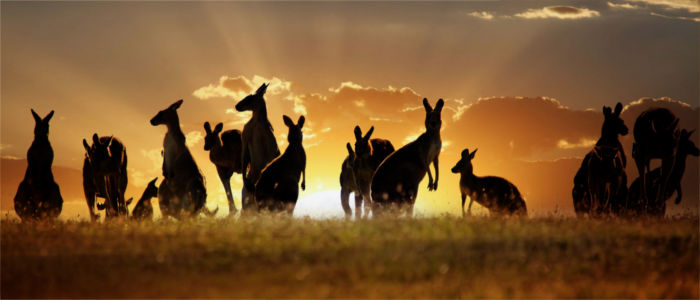
Nature - From the Outback into the reef
The Gibson Desert, the Great Victoria Desert and the Great Sandy Desert constitute the Australian tableland – the outback. Inselbergs such as the Uluru - known as Ayers Rock in the west - are characteristic of the region. Australia's driest desert is the Simpson Desert. It gets considerably more fertile in the Murray-Darling Basin - Australia's greatest river landscape, which is home to numerous Australian animals and plants. Marsupials like the kangaroo are creatures specific to this continent, which developed in isolation from the other world regions during the history of the earth. But also the cuddly koalas, the slow wombats and the Tasmanian Devil are typical of Australia. The unusual platypus looks like a creature from another planet. As the only mammal on earth which can lay eggs, it turns zoology upside down. The kiwi, which many people associate with Australia nowadays, is not actually a native fruit but was imported from China around the year 1900. Many Australian plants such as the eucalyptus grow along the Great Dividing Range - Australia's highest mountain range. You find one of the world's breathtaking ecosystems in front of the country's coast - the Great Barrier Reef. It extends over a length of 2,000 kilometres and is home to countless colourful species of fish and corals.

Natural sights - The Blue Mountains and Cape Tribulation
Diffused, blue light shines from the so-called Blue Mountains near New South Wales. This phenomenon is created by the intensely fragrant eucalyptus trees when the morning sun shines on the dew drops of the eucalyptus leaves and only half of it is reflected due to the essential oils. It creates a magical backdrop like no other. Travellers who want to experience the Australian rainforest in its entirety should try this at dizzy heights. The bridge network near the treetops makes this possible. The Kakadu National Park is particularly popular with tourists. Because of its natural beauty and biodiversity, it was chosen as the backdrop of classic films like "Crocodile Dundee". The so-called "Twelve Apostles" near Melbourne in the state of Victoria also allure countless tourists every year. Their pointed limestone rocks, which reach heights of up to 60 metres, line the coast within the Port Campbell National Park and watch the stormy sea with vigilant eyes. The sea, however, advances a few more centimetres towards the heartland every year and already brought several apostles to their knees, so that only eight of the original twelve are left. One of the most important spiritual sanctuaries of the aborigines are the inselbergs Uluru (Ayers Rock) and Olgas (Kata Tutja). When the sun goes down, the inselberg turns orange. Cape Tribulation owes its not very optimistic name to the legendary Captain Cook, who once said that all his troubles began at this place. Astonishingly, this region contains the most beautiful strips of land. The Wet Tropics of Queensland, the oldest Australian rainforest and the Great Barrier Reef constitute a few of the last paradises on earth.
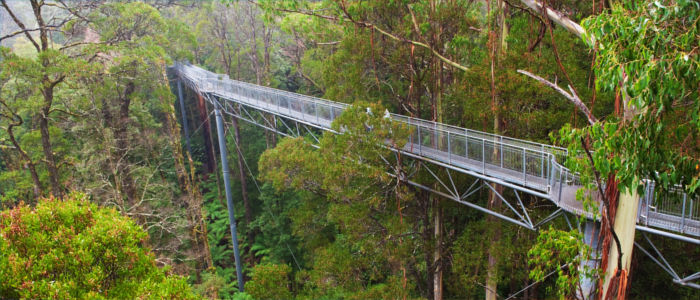
Culture - The rock paintings of the aborigines
The aborigines are Australia's indigenous people. They already captured their everyday life in rock paintings 30,000 years BC and provide an impressive insight into one of the world's oldest cultures today. The awareness for an Australian culture got lost for a long time but it is being supported and explored again now. The European colonial powers, especially the United Kingdom, had a great influence on the country. They have shaped Australia and its cityscapes - anove all, the capital Canberra, which was planned at the drafting table. The first British settlement was established in 1788 and is known as New South Wales to the present day. The country's cultural capital is not Canberra but Sydney. Its Opera House and skyline are known worldwide. With almost 4.1 million inhabitants it is also the continent's most populous city. The Australians are honest and open, they prefer direct social interactions to beating around the bush. The "Australian Way of Life" means living carefree and having an easygoing and relaxed basic attitude. Of course, the Australian inhabitants take their jobs seriously and work hard but work is not the centre of their lives.

Cultural sights - Melbourne, Sydney and Hobart
The Danish architect Jorn Utzon got nothing but scorn and derision over a long period for building a cluster of inflated sails. Now the Sydney Opera House with its five concert halls, the symphony orchestra and the ballet is the country's best-known landmark. The harbour around the opera is also worth seeing. Another Australian cultural centre is Melbourne. The city's skyline sparkles in the setting sun and is the ideal location for long nights and a lot of entertainment. Australia's capital Canberra was born out of necessity when the country could not decide on a capital. The planned city was constructed as a garden city and lies exactly between Melbourne and Sydney. A special urban gem is Tasmania's capital and seaport town Hobart outside of the Australian mainland. A stroll over the city's lively weekly markets is a great way of starting the day. You can still discover many of the aborigines' traces in the Kakadu National Park. The special property of their age-old rock paintings is that they depict inner organs, bones and rips in such detail that they remind of X-rays. Those who want to follow the aborigines' trails should not miss out on a tour through the Uluru-Kata Tjuta National Park.
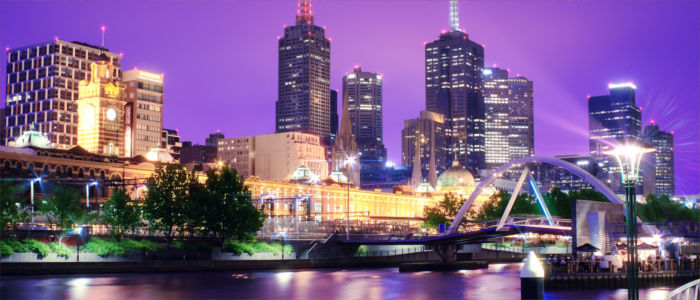
Experience - Bush food and vineyards
The roots of the Australian cuisine are strongly influenced by the British tradition. Scones, porridge and pasties are still common dishes of their diet. These "imported products" were already complemented by the native dishes containing kangaroo meat and fish during colonial times. The consciousness of an original Australian food culture was only raised in the recent past. The "bush food" of the aborigines, which was rejected for decades, is growing popular now and slowly becomes part of the Australian cuisine. You find a centre of gastronomy in Barossa Valley in the south of the country. Coinnoisseurs can get spoiled from dawn till dusk here. Another culinary highlight are the legendary wine tours through Australia's most beautiful wine-growing regions. There are over 50 different wine cellars in Hunter Valley and the vineyards in which you can taste the delicious juice of the grape. The Australian nightlife mainly happens in big cities like Sydney. Trendy clubs, rustic bars and rock pubs invite visitors to stay and celebrate. These venues are most frequently visited at the weekends but there are also many opportunities for going out during the week. Those looking for an alternative to Sydney are in good hands in Melbourne or Perth. Of course, Australia is suited for a beach holiday as well. One of the country's most beautiful beaches is located on Lizard Island near Queensland and you can watch whales from Fraser Island. On a hike through the Kakadu National Park travellers can explore the diverse flora. Those who want to experience Australia in all its glory should not miss out on a road trip along the world's most beautiful roads. Holidaymakers gain an excellent insight into the country's beauty on the Pacific Coast Touring Route from Sydney to Cairns or along the Indian Ocean Drive from Perth to Geraldton. Truly spectacular is a drive along the Great Ocean Road from Melbourne to Adelaide. The road is known as the "Scenic Road" among tourists from all over the world. There is hardly any better way of getting to know Australia's coast. A thrilling adventure is a drive into the outback, for example on the Gibb River Road in the west of the country.

Activities - Diving, surfing and dreaming
Australia is without doubt a country for water lovers. The unbelievably beautiful flora and fauna of the Great Barrier Reef, surfing metropolises like Torquay or the magical beaches along the coast constitute a paradise for bathers, divers and water sports fans. Over 36.700 kilometres of coast contain a number of the most beautiful beaches worldwide. Examples worth mentioning are the Whitehaven Beach of the Whitsunday Islands, the beaches of Lake McKenzie on Fraser Island and Shellbeach in Denham or Bondi & Manly Beach Sydney and St Kilda Beach at the coast of Melbourne. Adventurers have the opportunity to participate in a desert safari into the outback. Vital parts of equipment are enough water and good GPS reception. Visitors can experience the country's appeal by motorcycle or bike on the Great Ocean Road, which is often called the "most beautiful road on earth" and has a length of 290 kilometres. An animal experience is a camel ride along Cable Beach.
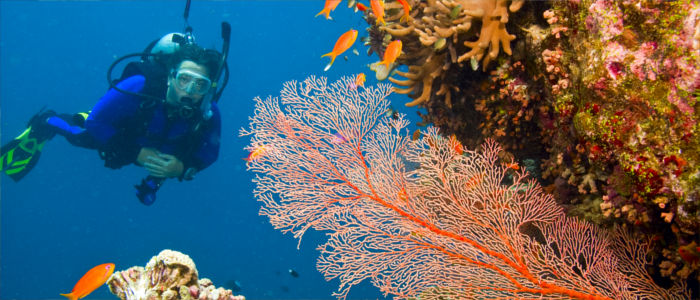
Information
The tourist season in Australia depends on which region you want to visit. Those interested in a tour through the outback should target the Australian winter months from April to October because it is not as hot in those monhs. The country's west and east coast is most frequently visited by tourists throughout the year. The months from April to November have low precipitation and are therefore suited for travellers who want to explore the northern coast. Australia has one of the most dense air traffic networks on earth. Besides hundreds of small airports, the Kingsford Smith International Airport in Sydney is the country's most important airport. You need a valid visa for entering Australia.
Australia is a paradise for divers and water sports fans. Adventurers and lovers of nature are also in good hands here and lovers of culture can follow the traces of the aborigines. Sydney, Melbourne and Brisbane are ideal destinations for those interested in a city trip.

